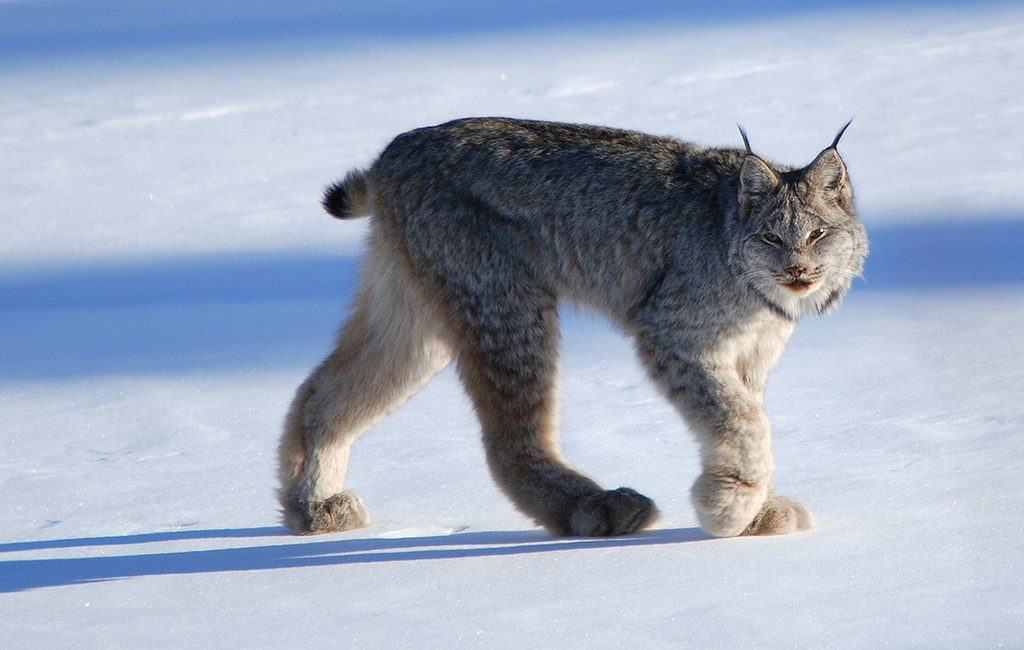
The U.S. Fish and Wildlife Service is considering removal of Canada lynx from protection under the Endangered Species Act (ESA). The wildcats are residents of the Boundary Waters region, though seldom seen by humans.
The federal agency, which works to restore populations of rare plants and animals, says a recent scientific study indicated lynx may no longer qualify as “threatened.”
Providing protection for Canada lynx under the ESA in 2000 initiated more than a decade of scientific studies to better understand the animals.
“Research, monitoring and conservation efforts conducted by state and federal agencies, tribes and academic institutions, helped refine biologists’ understanding of habitat needs, distributions, population characteristics and potential stressors,” the agency said.
The listing also prompted the managers of National Forests and other public lands to incorporate lynx conservation in their formal management plans. The Superior National Forest began adding lynx to its management plan in 2004.
Changing course
This month’s announcement reverses a previous draft of the assessment issued in 2016, in the final months of the Obama administration, which found that lynx deserved continued protection.
That draft predicted lynx populations would continue to decline over the rest of the century, mostly due to climate change and connected impacts. It pointed to Minnesota and Maine as two lynx areas most susceptible to degradation of habitat due to climate change. Climate models project reductions in the extent of boreal forest and snow conditions needed to support lynx.
“In Minnesota and Maine (units 1 and 2), suitable boreal forest and snow conditions are projected to decline more severely than in the western units,” the 2016 draft stated. “And in some climate modeling scenarios they could disappear completely from these units by the end of the century.”
While lynx were not thought to have a major presence in Minnesota when they were listed in 2000, subsequent research has found a stable breeding population, largely in the Superior National Forest. Biologists now believe there are anywhere from 50 to 200 lynx in the state, with several mothers giving birth to kittens every spring.
Possible political pressure
Continued uncertainty about the numbers of lynx throughout the lower 48 states, as well as worries about their future in a warming world, drove negative reactions to the news from wildlife groups.
“The Service’s abrupt about face is an obvious attempt to abandon the good work toward recovering this climate-impacted species because saving lynx from extinction is not aligned with the Trump administration’s climate-denial and emphasis on maximizing resource extraction on our public lands,” said Bethany Cotton, wildlife program director for WildEarth Guardians. “The Fish and Wildlife Service needs to stop playing politics and stick to the science clearly showing lynx need our help.”
The Center for Biological Diversity sued the federal government last year over lynx impacts of the proposal to exchange Superior National Forest lands with PolyMet Mining Corp. to allow the company’s open-pit mine. said the agency should continue studying lynx and develop a plan to restore and protect their populations. The group also said it would continue to fight for protection.
Snow specialists
Lynx are highly specialized, with adaptations like big fluffy paws and long legs that help them live and hunt in deep snow. They almost exclusively prey on snowshoe hare, linking the two species’ populations closely.
The Fish and Wildlife Service report points to timber management, roads, mineral exploration, and climate change as threats to their future. Human impacts can cut off habitat connections, effectively shrinking the available land where lynx can survive.
“Mineral exploration may result in short-term displacement of lynx,” the report reads. “Mining activities and associated development may result in an irreversible loss of habitat or increased mortality risk. The specific effects to lynx and their habitat will depend on the scale and type of each project.”
Other activities which compact snow, like snowmobiling, skiing, and dog-sledding can all make it easier for wolves, coyotes, and bobcats to access lynx habitat, competing for territory and food. The scientists noted that any such effects on northeastern Minnesota’s population are “ambiguous.
“Outside the BWCAW, snowmobile activity is extensive and increasing significantly,” the report states. “Advances in snowmobile capabilities have raised concerns about intrusion and snow compaction in areas previously not vulnerable to high levels of snowmobile use.
The latest report also notes that while understanding of lynx has increased, there are still big unanswered questions about “kitten survival, recruitment, and the influence of immigration and emigration on population persistence.”
The next steps in the agency’s process to consider delisting is to publish a proposed rule in the Federal Register, receive and review public comments, conduct scientific review, and announce a final decision.

